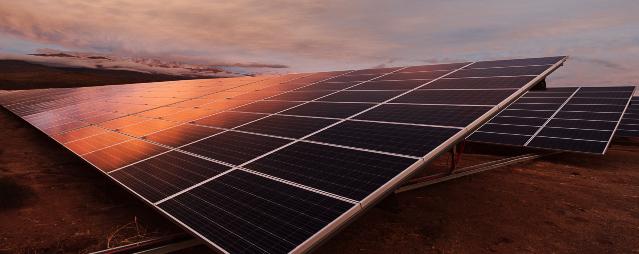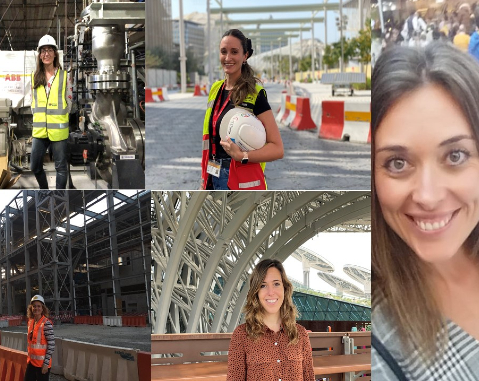- ACCIONA
- Press room
- Blog
- 2021
- The future of utilitie...
The future of utilities in the Middle East
25/01/2021By Jesús Sancho, ACCIONA Middle East Managing Director

With the world moving forward towards a more sustainable and green environment, many organizations have taken it upon themselves to spread awareness and to take careful steady steps to reach this challenging goal.
According to the International Renewable Energy Agency (IRENA) headquartered in Abu Dhabi (UAE), renewable energy could supply four-fifths of the world’s electricity by 2050, massively cutting carbon emissions and helping to mitigate the climate change. With renewables coming to the forefront of a global transition ever more conscious of the environment, many countries in the MENA region have started to take initiative.
In the GCC, cheap electricity has been considered almost a birthright and electricity consumption per capita is among the world’s highest. The per capita energy consumption in some of these countries is up to four times that of the United Kingdom and up to 20 times that of India, for example. However, the GCC has embraced the task to reduce their carbon footprint.
So what has triggered the need for a substantial change? Four primary factors are resetting the foundations of the GCC energy sector:
- Electricity demand across the GCC has risen at 5% per annum since 2000 and is foreseen to rise by an average 2.1% between 2015 and 2050, according with the latest reports if nothing was done.
- Oil prices are volatile and prices are far from peak levels. This is putting pressure on government revenues and prompting leaders around the region to re-evaluate the balance between the domestic consumption of crude oil and the allocation of resources for profitable export.
- Expensive gas production in the region. However, greater use of low-cost renewables would reduce the need for expensive fuels in power generation, freeing up oil production capacity for export.
- Renewable energy costs have drastically fallen in recent years, and the region’s abundant solar potential has made solar power cost –especially photovoltaic– competitive when compared to conventional energy generation technologies.
Over the past decade, several GCC countries have announced ambitious renewable energy targets. With energy capacity requirements expected to increase as mentioned before, the GCC countries are moving fast to adapt their energy mix. In particular, solar energy has already entered the GCC to stay and with the largest solar fields in the world reaching 2Gw nominal power. The UAE has one of the highest solar exposure rates in the world, enjoying more than 300 days of sunshine a year. Solar power plants can typically expect around 1,900 hours of operation per year, doubling the levels typically found in Europe. This situation encourages green energy investors and technology providers which are focused on renewable energy developments to fight against climate change.
Across the GCC countries, public and private investment in new solar energy is therefore increasing in size and scope. Let´s have a look to the most relevant initiatives in the region:
In Abu Dhabi (UAE), the Pearl Rating System is the green building rating system developed by the Abu Dhabi Urban Planning Council as part of their sustainable development initiative, Estidama (the Arabic word for sustainability) to ensure that all future projects are established in a viable –greener– manner. Another example of what these leaders are making to ensure a sustainable future is The Masdar City project, developed by the Abu Dhabi Future Energy Company, which is one of the world's most sustainable low-carbon urban communities. The city mainly relies on solar energy and other renewable energy sources, and it is considered a pioneering vision of an environmentally conscious city. On the other hand, Dubai has backed a number of institutional and governmental initiatives such as the Dubai Clean Energy Strategy 2050. It aims to place the country at the forefront of a low-carbon economy by getting 50% of its power output from clean energy sources by 2050. About 7% of this masterplan has been achieved by 2020. Likewise, in Sharjah, Bee´ah is one of the fastest growing environmental management company. With the objective of creating a sustainable future, Bee´ah pushes the boundaries to make rapid progress towards its goal of elevating Sharjah, to the position of Environmental Capital of the Middle East.
Saudi Arabia has also been actively moving towards supporting renewable energy and environmentally viable projects. The Kingdom announced last year the allocation of monetary loans in excess of US$320 million for local companies venturing into the renewable energy sector, through the Mutjadeda program launched by the Saudi Industrial Development Fund for renewable energy projects. In 2017, the Kingdom established the Renewable Energy Project Development Office (REPDO) to deliver the goals of the national renewable energy program, a focused initiative aiming to enhance the renewable energy industry, under Vision 2030 and the King Salman Renewable Energy Initiative. We are all excited to participate in the NEOM City. NEOM will introduce a new model for urban sustainability and be a place that is focused on setting new standards for community health, environmental protection and the effective and productive use of technology including the latest advances for smart cities.
Oman is also very committed to the environment through its government authorities Be´ah, as the entity responsible for solid waste management in Sultanate and the OPWP which is embarked on sustainable projects of power, water and an upcoming waste to energy facility.
Bahrain has raised its renewable energy target from 5% to 10% by 2035 and has mandated installation of solar panels on new buildings, and Kuwait has set a target of having renewable energy contribute 15% of the total energy mix by 2030.
Qatar and Kuwait are also embracing the change with sustainable mega projects being developed in the utilities –namely solar– and waste to energy sectors.
With more organizations working in line with GCC’s sustainable vision, ACCIONA, a pioneering developer of sustainable solutions for infrastructure, energy, water and urban solutions which allow us to respond to society’s needs and promoting technological innovation in all our projects, has been working for the last 10 years in achieving a sustainable development in the GCC region and across the World. ACCIONA has been a carbon neutral company since 2016 and in 2018, we avoided the emission to the atmosphere of 14,7 million tonnes of CO2 thanks to generating energy solely from renewable sources.
It is clear that change is on its way to the GCC utility sector, with renewable energy expected to play a vital role in the region’s economic diversification plans. The question is: Will the region’s state-owned, vertically integrated utilities be able to adapt on time? All signs are positive. The countdown is on to a new energy market in the GCC, one reshaped by renewables, digital technologies, smart grid infrastructure and changing consumer demands. For the region’s utilities, adapting to very different conditions will require overcoming some significant challenges, as well as supportive policies from government and regulators.
As more countries take charge to tackle the threats of climate change looming over the world, we must all increase our efforts to take steps to build a better planet.


View ACCIONA Social Networks